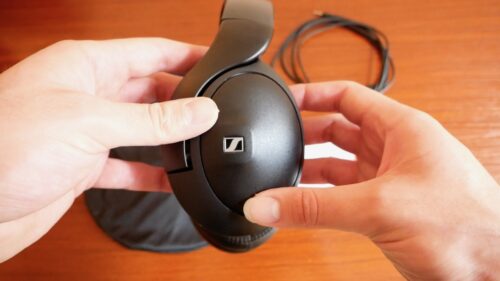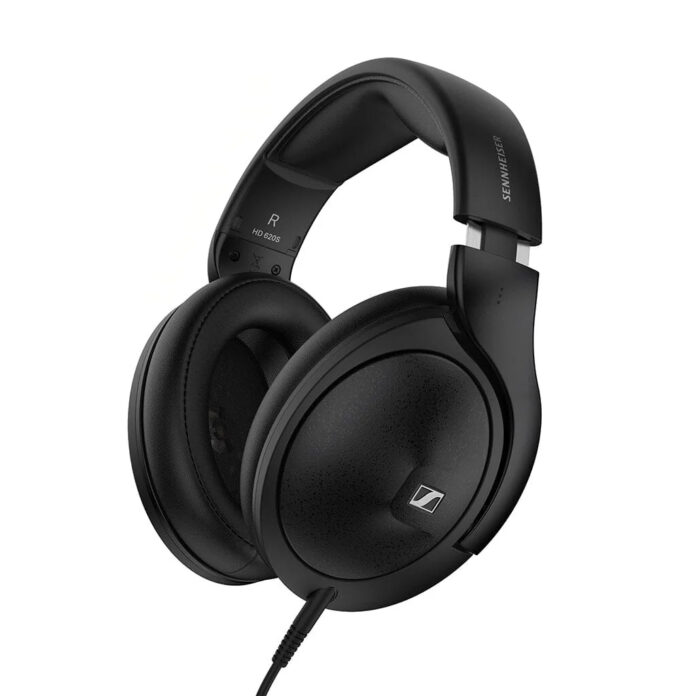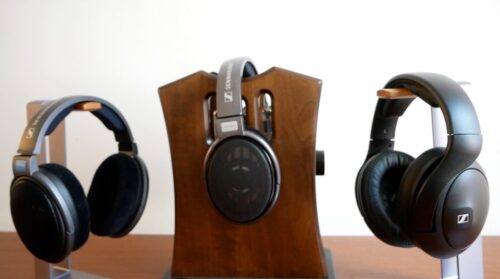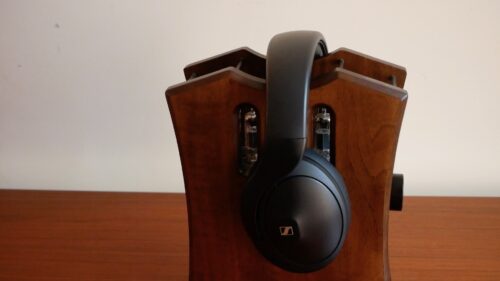Sennheiser is one of the most historic brands in the HIFI world and for good reason. Most listeners know that when they buy a product from Sennheiser, they can stand assured that the equipment works properly and is well-built. Studio legends like the HD600 were released 27 years ago and are in my opinion the best headphones you can get for the price. With the bar set high, the new HD620 not only has to compete with other headphones in the market but also with its own legendary product line. For this reason, I wanted to do the HD600 vs. HD620 vs. HD650 comparison review. Is the HD620 just a closed-back version of the HD600, or is it a brand-new design you should add to your collection?

What’s in the Box?
|
|
|
Looks and Feel
The number one complaint I hear about the HD600 and HD650 has nothing to do with the sound, but the tight fit around the earpads and headband areas. I’m acutely aware of this because I have a head that looks too large for my already big body. Wearing the HD600 isn’t uncomfortable, but I do have to adjust them pretty far. What I immediately noticed on the HD620s was a wider headband that also has an improved headband adjustment mechanism. The foam on the earpads and headband is noticeably plushier than the HD600 and HD650. Gone is the pressing feeling of the headband. My personal opinion is that the HD620s is the most comfortable of the three, but users should try them out to see if the shape fits their unique ears and head.
In terms of looks and dimensions, the products all have the sleek character Sennheiser is known for. The closed back of the HD620s has a chassis covering, unlike its open back siblings. Size wise, they’re all relatively similar, with the weight of the heaviest (HD620s) and the lightest (HD650) being within 60g of each other. The sustained curves of the HD620s expound on the oval shape of its predecessors. There’s a continuity in the appearance of all 3 products, with minimal branding, dark colors, and arching curves. Despite this, I’m a sucker for classics. In my opinion, the HD600 is one of the best looking headphones ever released. Let us know which ones you think look best in the comments below.
Design – HD600 vs. HD620s vs. HD650 Comparison Review
All three of these headphones share a similar 42mm transducer with a 38mm diaphragm. Sennheiser hand picks components for their products ensuring a tolerance of +/-1dB. This ensures uniformity in each driver and makes moving stereo panning feel uniform. The HD600 is rated at 97db/mw, HD650 at 103db/mw, HD620s at ???dB/mw.
The only complaint I have for the HD620s is the lack of stereo 2-pin cables. Both the HD600 and HD650 come with stereo detachable 2-pin cables. This feels like a downgrade from these. I suspect that Sennheiser’s design is meant to compete with another closed-back studio legend, the Beyerdynamic DT770 Pro. I still wouldn’t say this is a dealbreaker considering the meticulous quality control and assembly Sennheiser prides itself upon. The cable is undoubtedly high quality and should last with good care.
Soundstage
It’s hard comparing closed-backs to open-backs, specifically when looking at soundstage. A closed-back structure sacrifices width for less noise bleed and better isolation. Although the HD620s does feel closer than the HD600 or HD650, I was surprised by how wide this closed-back sounded. A quick soundstage test gave me a good idea of how expansive the HD620s is. Although not as horizontally far as the others, reverbs and trailing delays sounded fantastic for a closed back. That being said, they do sound more compact, but only marginally closer. Of the three, the HD650 sounds the most holographic, with the HD600 next and the HD620s being close behind. Sennheiser has done a fantastic job of coming close to the HD600’s medium width. Fans of the series soundstage can still expect a similar width without being disappointed.

Listening Impressions – HD600 vs. HD620s vs. HD650 Comparison Review
Lows
Of the three, the warmest headphone is the HD650. The HD600 has been a longtime benchmark for neutral sounding headphones, and the HD620s follows suit in its bass frequency response. I don’t want to call the frequency response identical, but the tight and flat lows in both the HD600 and HD620s are similar without a doubt. Listening to jazz on the HD650 was my favorite application for them. Walking bass on “Birdlike” by Freddie Hubbard had a round liveliness that stepped through the track with a rich character. Soul, electronic, jazz, and rap music all sounded fat and gratifying on the HD650.
I’m a huge fan of the HD600’s bass response and the HD620s seems to enhance an already great sound signature. My impression is that a slight bump in the upper midrange brings a little bit of tightness to low-frequency instruments on the HD620s. Less noise bleed from the closed back and higher sensitivity also ‘thuds’ a little more when driven, highlighting sub-bass texture. HD600 isn’t known as a bass-focused headphone, and that same neutrality is present in the HD620s. The bass on both of these are squeaky clean and not fatiguing at all. Like an identical dish with a little extra spice, Sennheiser has recreated its classic sound signature with detailed adjustments. Out of the bunch, I have to call it a tie between the HD600 and HD620s. Sennheiser hasn’t fixed anything that wasn’t broken.
Mids
I can confidently assume that Sennheiser’s philosophy when designing the HD series doesn’t favor certain frequencies over others. The entire line top to bottom favors neutrality over boosting any particular range. That being said, the mids in the HD620s are undoubtedly the most impressive.
My impression is that the HD650 brings more low mids into the mix to avoid a low shelf past 300Hz. Although this is pleasant on pop and jazz music, certain guitar sounds like Duane Allman’s or Tom Bukovac’s become too muddy and overtake a mix. For the non guitarists, these players use gear like the Nobels ODR-1 or Marshall Super Bass which already boosts low mids. Regardless of the virtuosity of the playing, the tones hijack the sonic space when played through headphones that boost this frequency. To balance this character, Sennheiser brings up frequencies between 1.5kHZ and 2kHz. The HD650 remains neutral in signature, but I’ve always noticed a subtle lean towards favoring the low end in these. They’re a little brighter in certain spots but something about these has never felt as organic as the HD600.
The HD600, on the other hand, is phenomenal in the mid-frequencies but could have always used a touch of brightness to my ears. Although I think the HD600 may be one of the most versatile headphones ever designed, scooped sounds have always felt a little hollow to me. This isn’t a criticism at all, because I know that their recreation of mid sounds is fantastic. My personal preference comes to fruition in the HD620s. The low and middle mid character is very similar to the HD600, with a little less added brightness than the HD650. The mids are organic, full, rich, and sparkling all at the same time. Of the three, the HD620s has my favorite mid character.
Highs
Sennheiser’s highs are beautifully neutral and responsive. In short, the brightness in order from most to least is HD620S, HD600, HD650. I’ve noticed the most variation in this frequency range. The HD620s have a similar brightness to the HD650 without the whooshing lows. There aren’t the same dramatic surgical cuts to the frequency response, and I did notice a little less brilliance in the HD650. With that in mind, the HD620s has a perceptibly brighter sound because of how much less bass and low mids I’m hearing. Users should remember that if everything in a mix is boosted, nothing is boosted. This reductive EQ means that the HD620s doesn’t have to compete with the lows present in headphones like the HD650.
Being a truly neutral headphone, the HD600 has enough brightness to accentuate the character of sounds but doesn’t have enough to be fatiguing for me. Its treble response is a little more subtle than the HD620s. With that said, it has a similar voicing that just doesn’t have as much shimmer as the HD620s. Songs like “Death Message” by Extreme Noise Terror which are filled with feedback are still comfortable to listen to. I don’t seem to hear the nuances like stick attack and string noise as much when listening to the HD600. This isn’t something I’m disappointed by, considering my ears are sensitive to treble frequencies. Of the three, the HD600 has my favorite high-frequency response.
Summary – HD600 vs. HD620s vs. HD650 Comparison Review
The HD620s builds on the legacy of its predecessors while still refining what makes the Sennheiser brand great. The multitude of fans who loved the HD600 will find a lot of the similar characteristics in the HD620s. I can’t tell you that this is just a closed back version of the HD600, because of how many similarities it shares with HD650. A more accurate assessment would be to call these the blend of the HD600 and HD650 with a closed back. With that in mind, if you like the neutral character all of these have and need a closed back for recording or mixing, the HD620s is undoubtedly worth the investment.
Order the Sennheiser HD620s, HD600, and HD650 at Audio46
Compare the ranking of various headphones, earbuds and in-ear monitors using our tools.
Discuss this, and much more, over on our forum.
---MAJORHIFI may receive commissions from retail offers.

















